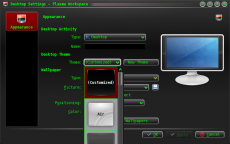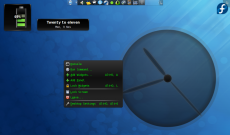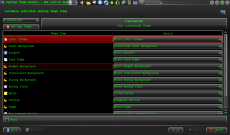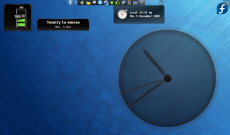Toolbox
Template:I18n/Language Navigation Bar
This page offers examples of formatting code for common tasks
Add an i18n language bar
| {{Template:I18n/Language Navigation Bar|Toolbox}} |
Simply replace the existing pagename (Toolbar, in this instance) with the name of the page you are creating.
Format your text
Use Headings
Headings automatically form part of your Table of Contents, so need to be structured. Their place in the tree is governed by multiple '=' characters at each end of the heading. Avoid using a single one - that denotes a page heading, and the automatic page heading should be used. Your major headings will use '==text goes here==', the next level, '===more text===' and so on.
Use bold and italic
Blips are used to specify bold and italic words.
Use '''bold text''' to specify bold text and ''italic text'' to specify italic text.
Add a code snippet
Simply adding a space at the beginning of the line displays your text in a fixed font, so 'this snippet of code' becomes
this snippet of code
If it needs to stand out more, you can enclose it in a box:
| this snippet of code |
However, you lose the clarity that the change of font gives. This method may be more useful for extended snippets, of several lines, rather than short ones. The decision should be based on what is aesthetically pleasing in the context of the rest of your page layout.
Add indents
':' is used for an indent, and can be used in multiples. A single ':' indents by two characters.
Lists, numbered and bulleted
* is the symbol to use for bulletted lists. ** gives a second level:
::* One star ::* Next point ::** Sub-point ::* Third point
produces
- One star
- Next point
- Sub-point
- Third point
Numbered lists are produced in the same way, using '#'.
::# A single hash ::# Second point ::## A sub-point ::# Third point
produces
- A single hash
- Second point
- A sub-point
- Third point
This is less useful than the bulletted list.
Illustrate your text
Add a single image, centered
| [[Image:KMail-kde4.png|250px|center]] |
Note that you can change the position of the image, but the default is left. The size of the image depends on the circumstances, but for screenshots I recommend no less than 250px and no more than 500px.
Make the image clickable, and add a caption
Where you need to show more detail, create a moderately sized image, clickable, so that the full-size can be seen. Simply add the parameter '|thumb' within the image parentheses.
A caption can also be added as a parameter, but will only show if '|thumb' is present.
Use tables to precisely place multiple images
| {|style="width:500px" cellpadding="2" |[[Image:Desktop-config-customized.png|230px|center]]||[[Image:Desktop-settings-rightclick.png|230px|center]] |- |[[Image:Desktop-theme-details-dialog.png|230px|center]]||[[Image:Plasma-multiple-themes.png|230px|center]] |} |
displays
 |
 |
 |
 |
Note that all the parameters for one image are contained within ..., and cells are separated by '||'. To start a new line, insert '|-'
